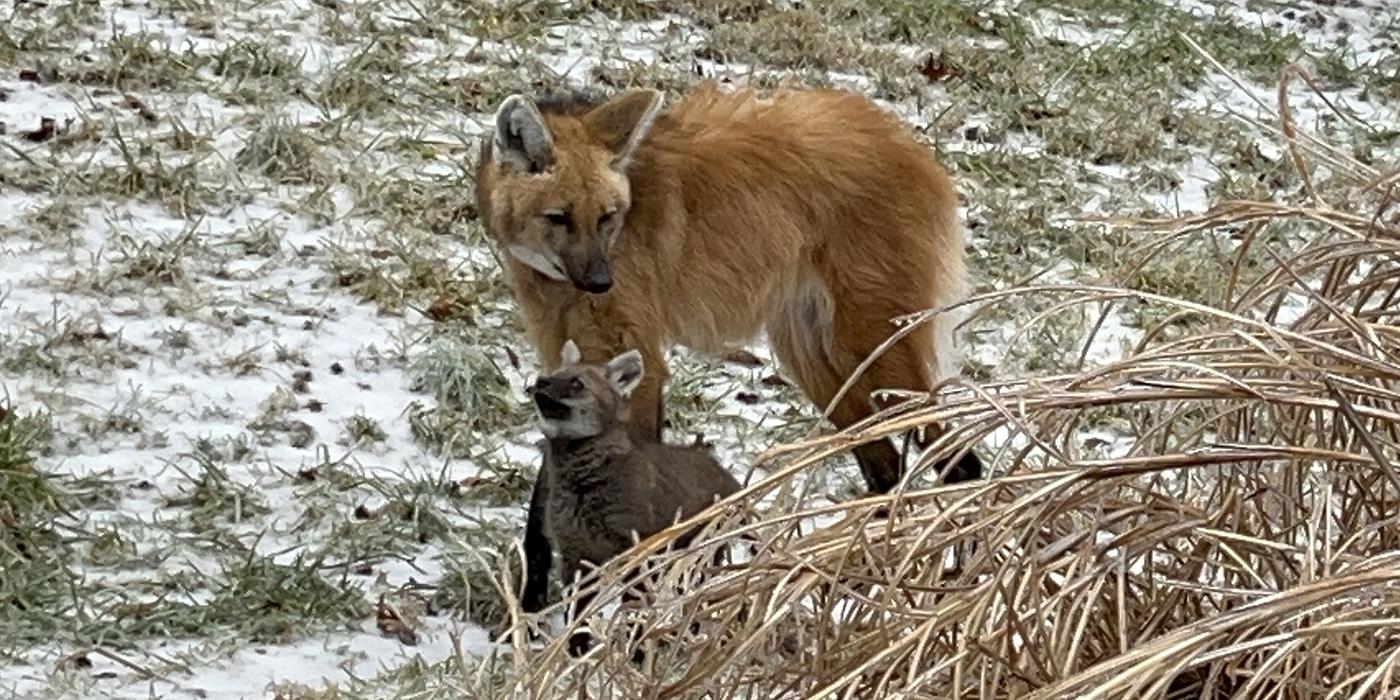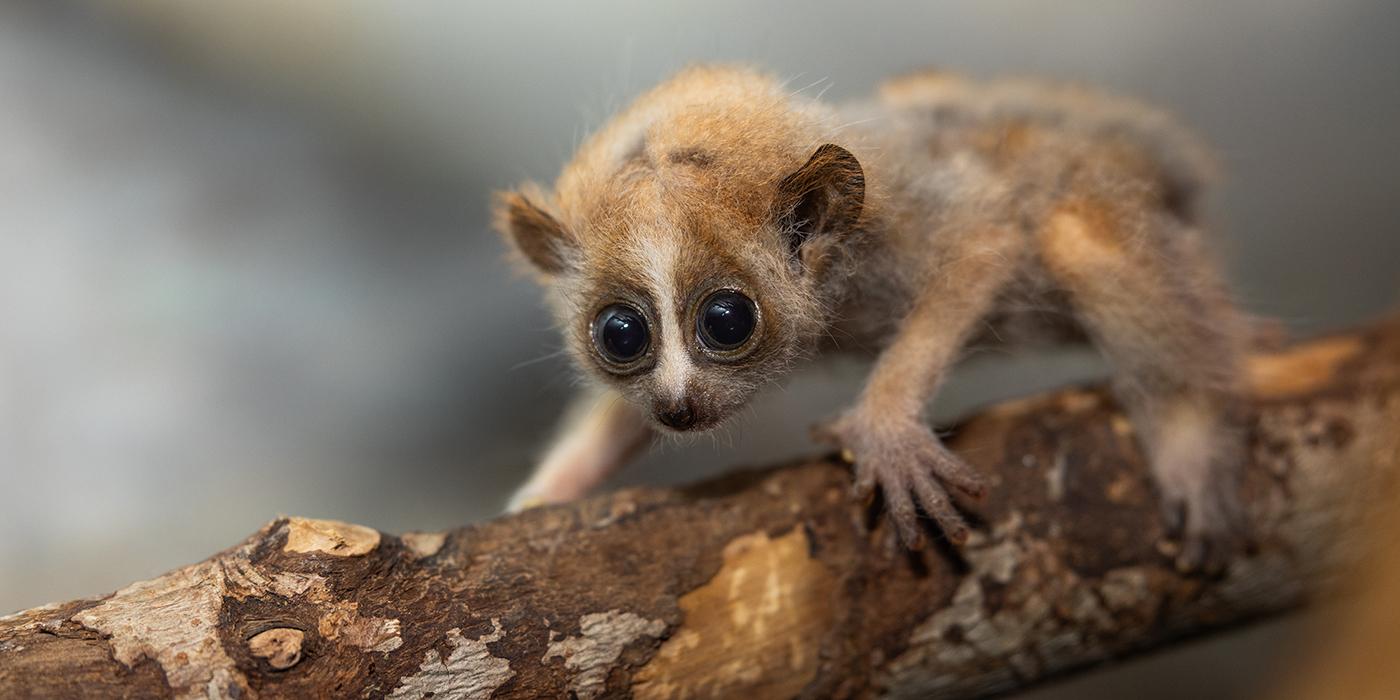Cubdate #17: Get to Know the Cubs
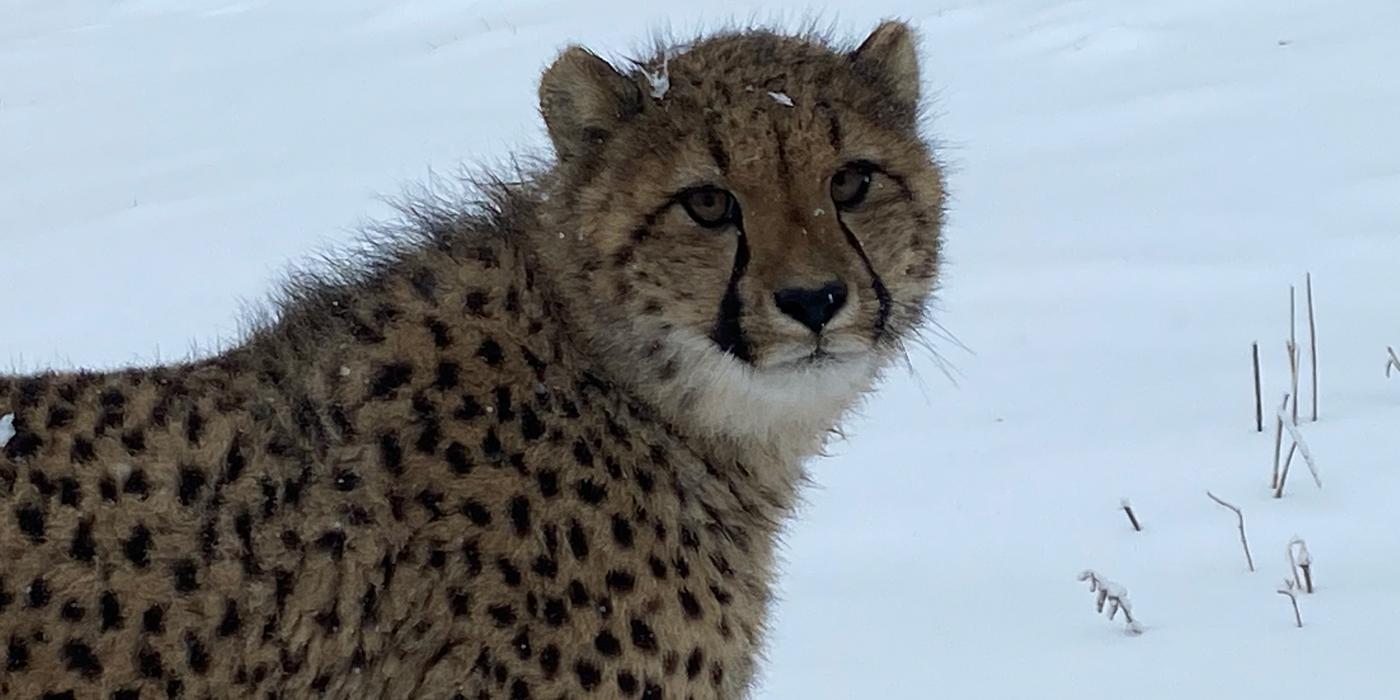
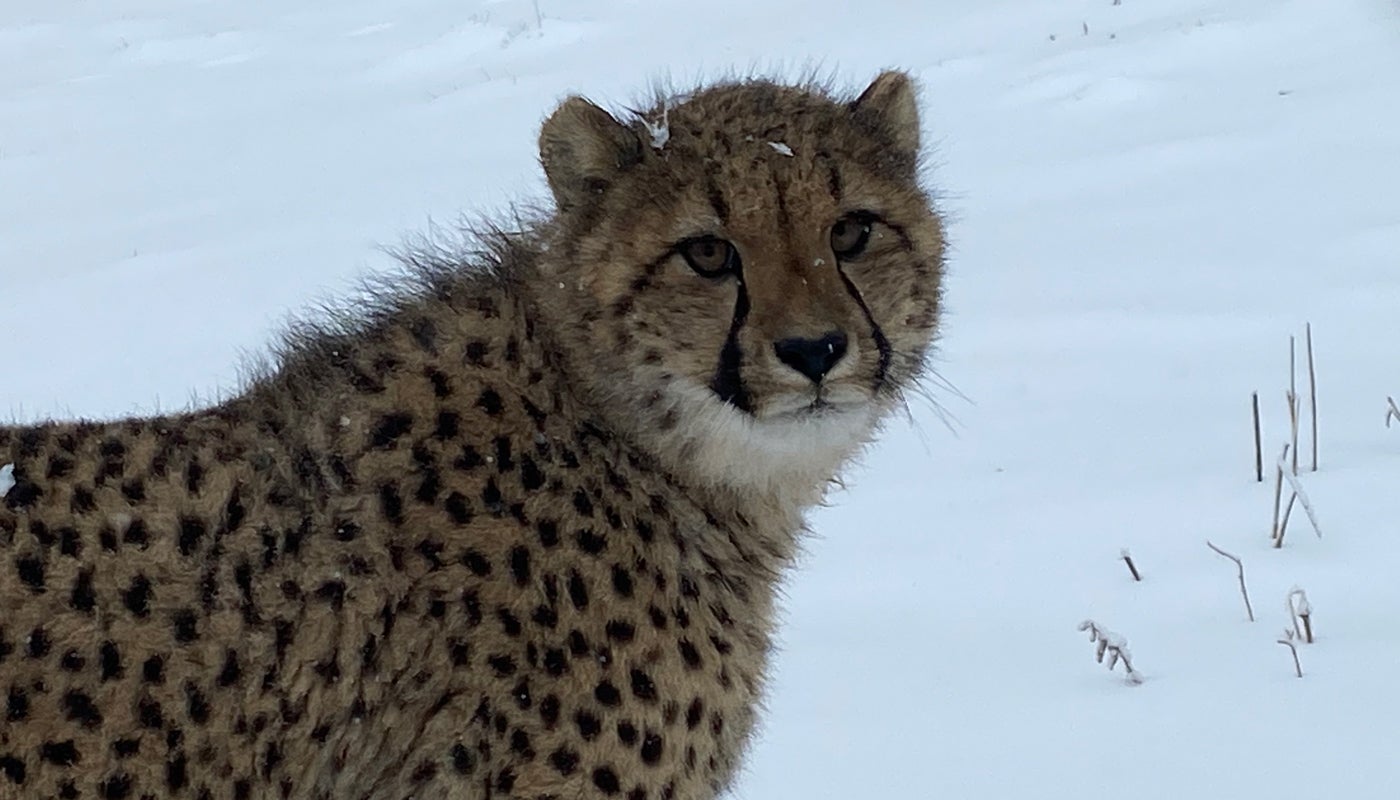
The cheetahs at Smithsonian Conservation Biology Institute in Front Royal, Virginia, have experienced a lot of snow over the last month. We have seen Echo’s four cubs running around the yard a lot more in the cold weather. On our snowiest days, when their fur is full of snow, they cuddle more often and groom each other.
Occasionally, when the conditions are right and the snow hardens with a bit of an icy layer on top, the cheetahs’ jolly ball toys will slide quickly over the slick surface. The cubs love to chase them around. Sometimes, we toss snowballs over the fence for them to try and chase too.
All our cheetahs still receive carcass feedings as part of our nutrition and enrichment programs, no matter the weather. We also toss bones into their yards, but these can be tricky for the cheetahs to find. Cheetahs see motion and far-away things really well, but their eyesight is not as great up close. Their sense of smell is also not as strong compared to other big cats.
To accommodate this, we sometimes offer the bones indoors. As mentioned in a few of our previous updates, carcass feedings are a key component of cheetah health. They help strengthen their jaw muscles and aid in the digestive process.

Around the time that Echo’s four cubs turned 6 months old, their personalities started to develop. Now, at almost 11 months old, we are able to really see each personality shine. Jabari is the most relaxed and calm. He is confident and seems very unfazed by keepers. He is motivated by treats but does not get overexcited, which makes him easy for us to shift train (train to move from one area to another).
Hasani is the shyest toward us and is most comfortable when his family is around. When we weigh the cubs, for example, Hasani does best if he can see that one of his siblings is in the stall next to him.
Amabala is the most excitable and food-motivated cub. She will do anything for a snack, so she is almost always willing to participate in training. She is a quick learner and has figured out that we feed special treats, like chunks of meat, using tongs or a spoon. The moment she sees one of those items she is at the front of the pack, ready to receive the treat. Erindi is well behaved during training and is the goofiest of the four cubs.

As the cubs grow and their personalities develop, we have also seen them become braver. They test limits and behave in ways that most people would consider naughty. They practice posturing toward us, which is when they turn sideways and try to make themselves look big. They also slap at the ground or fence, jump on the fence and hiss at us more often.
Echo, a feisty cheetah herself, is usually the first one to slap at the ground or fence. The cubs are likely learning these behaviors from her and will continue to exhibit them for a while. We have some 2-year-old cheetahs that we still consider to be going through this phase.
These behaviors are a form of defense that cheetahs would use in the wild to warn other animals to keep their distance. Because we come in close contact with the cubs, we are really the only ones they have to practice on. We generally try to respect their wishes and give them their space.
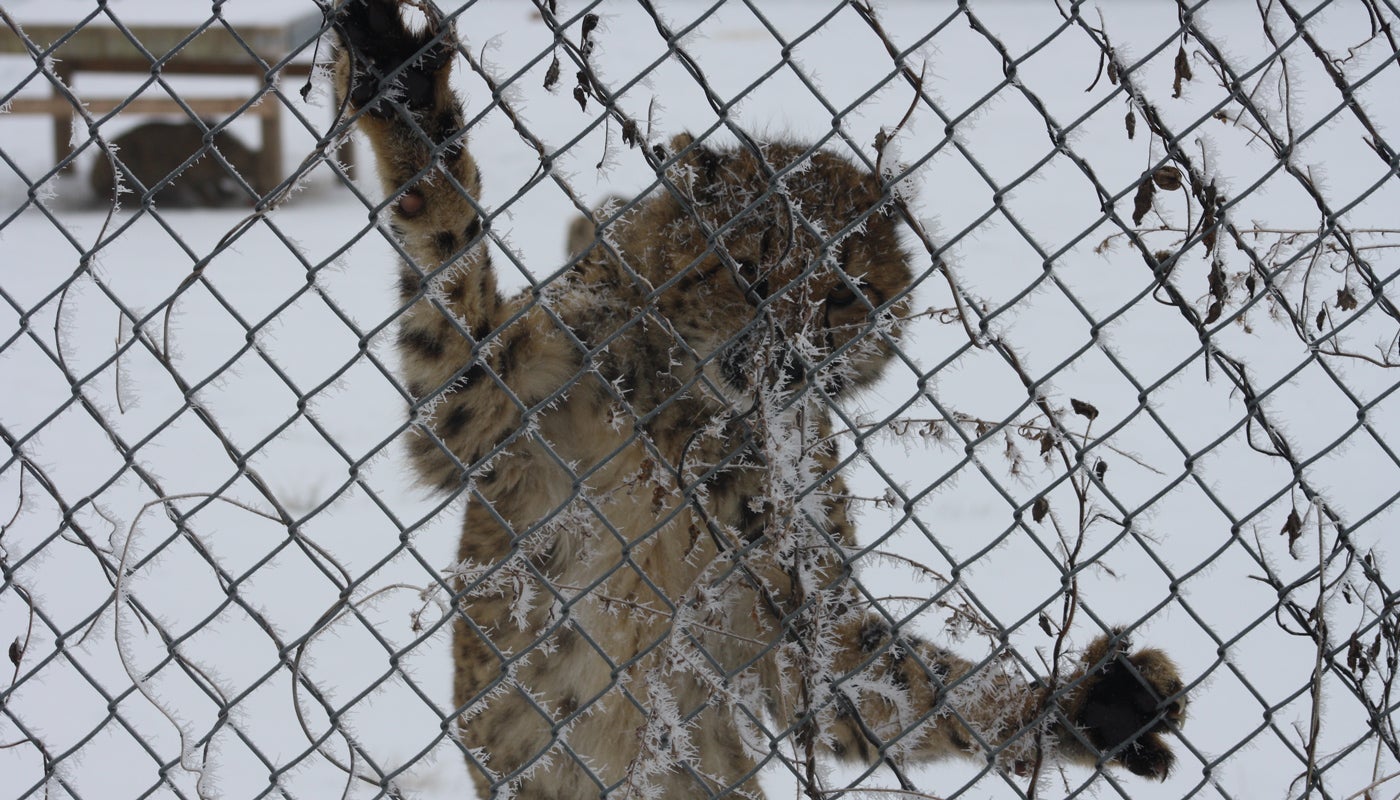
The cubs are quickly approaching their first birthdays, which means they are each due for two vaccines. All the husbandry training sessions we have done with the cubs have helped us prepare. We will administer both vaccines using a pole syringe, which is an extension pole that enables us to give injections from a safe distance. We also have a modified end with a syringe, instead of a needle, for applying topical medications.
The cubs have been getting comfortable eating in their stall with an added sideboard. This sideboard creates a "chute," which helps position the cubs closer to the mesh fence. We use this set up to weigh them, administer vaccines, shave their ID marks, and apply flea and tick medications.
Recently, we have started to introduce them to the pole syringe in this environment with a gentle poke on their back legs while they eat. During this training we do not poke the cubs with a needle, but instead use something blunt to get them used to being touched.
The cubs are also learning the verbal cue “touching,” which we say just before we touch them with the pole syringe. This gives them a warning, and it also adds a level of choice. As with all our training, the cheetah cubs can get up and leave if they want. This almost never happens, because they are happy to let us lightly touch them while getting meat and treats to eat.
Their other husbandry training has been improving as well. We are still working on shifting, but they are much better about going outside when asked. At their most recent weigh-in, Jabari tipped the scales at 73.6 pounds (33.4 kilograms), Hasani at 67.9 pounds (30.8 kilograms), Erindi at 65.7 pounds (29.8 kilograms) and Amabala at 63 pounds (28.6 kilograms).
Be sure to read up on Echo and her four cubs in previous updates! Curious about the different types of enrichment that cheetahs and other big cats receive? Check out an in-depth look at big cat enrichment..
Related Species:

